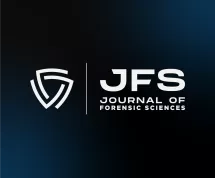Search
Explore content from JFS, ASB, the AAFS Newsfeed, and other content using the search bar or filters.
Forensic Anthropology: Terms and Definitions

Standard for Scene Response: Initial Response by Scene Investigators

Standard for Reports and Testimony inForensic Toxicology

Standard for the Documentation and Processing of Shooting Scenes

Best Practice Recommendation for Determining What Scene and Death Locations a Medicolegal...

Infanticide and neonaticide: How often are these victims concealed?
Homicide rates in infants (under 1 year of age) and neonates (under 1 day of age) are greater than in any other childhood age group. Using data from the National Violent Death Reporting System (NVDRS) for the years 2018–2021, we sought to determine the demographics of infanticide...
Best Practice Recommendations for Internal Validation of Human Short Tandem Repeat...

Standard for Internal Validation of Human Short Tandem Repeat Profiling on Capillary...

Standard for Familial DNA Searching

“Hidden” dangers in a mass fatality aircraft crash incident: Heavy metal contamination in...
Bone composition is affected during the lifetime of the organism by the nutrition of the individual, whereas postmortem bone composition is affected by the surrounding burial environment. Additionally, the presence of certain elements in a buried environment can affect the struct...
Evaluating novel and conventional cell‐separation techniques for sexual assault...
Biological evidence from sexual assaults frequently includes few male cells (i.e., spermatozoa) and numerous female cells (i.e., epithelial cells). In practice, their genetic analysis typically involves separating the victim's cells from the perpetrator's sperm using co...
Post‐mortem cardiomegaly descriptor: Call for consistent criteria
Although the post‐mortem descriptor of cardiomegaly is an important component of understanding a sudden death, there is no unified definition. A recent survey reported the usage of heart weight correction models of Molina or Kitzman, for example, or simple step cutoffs such as 35...
ASB Newsletter – July 11, 2025
